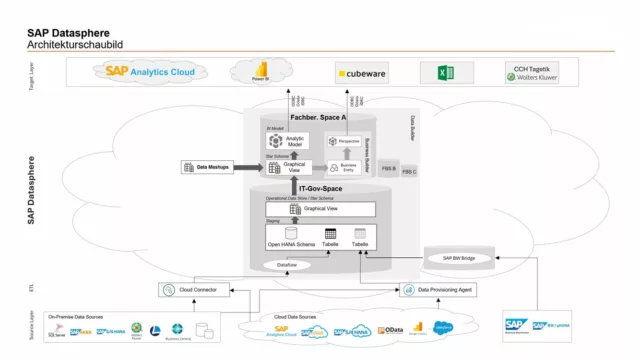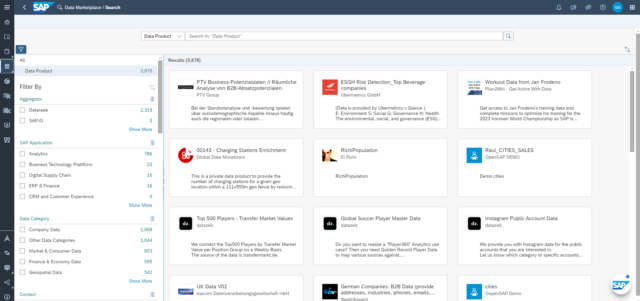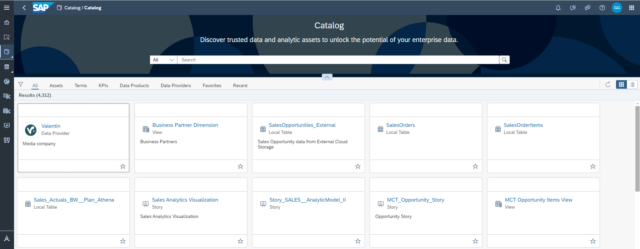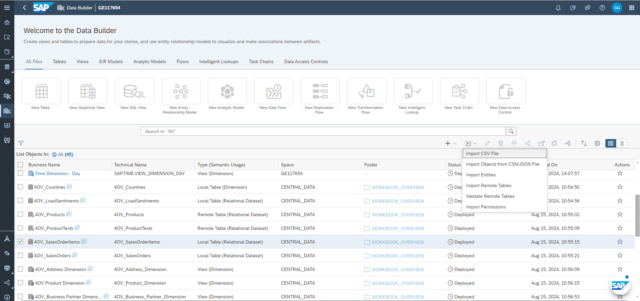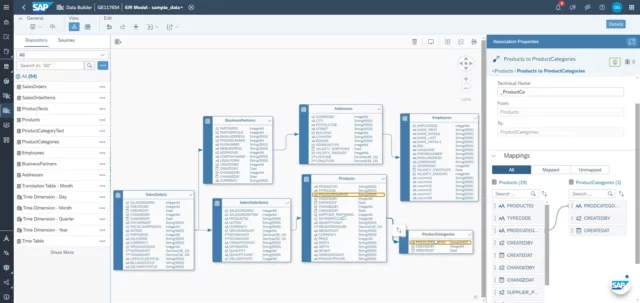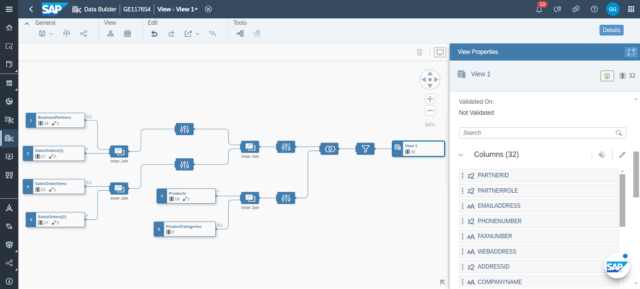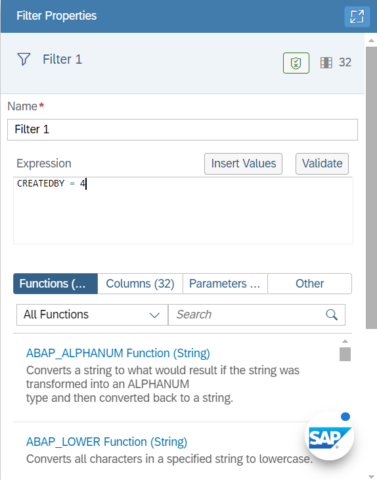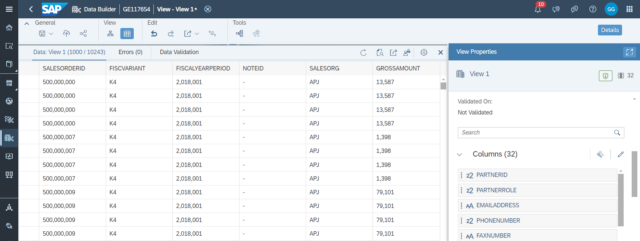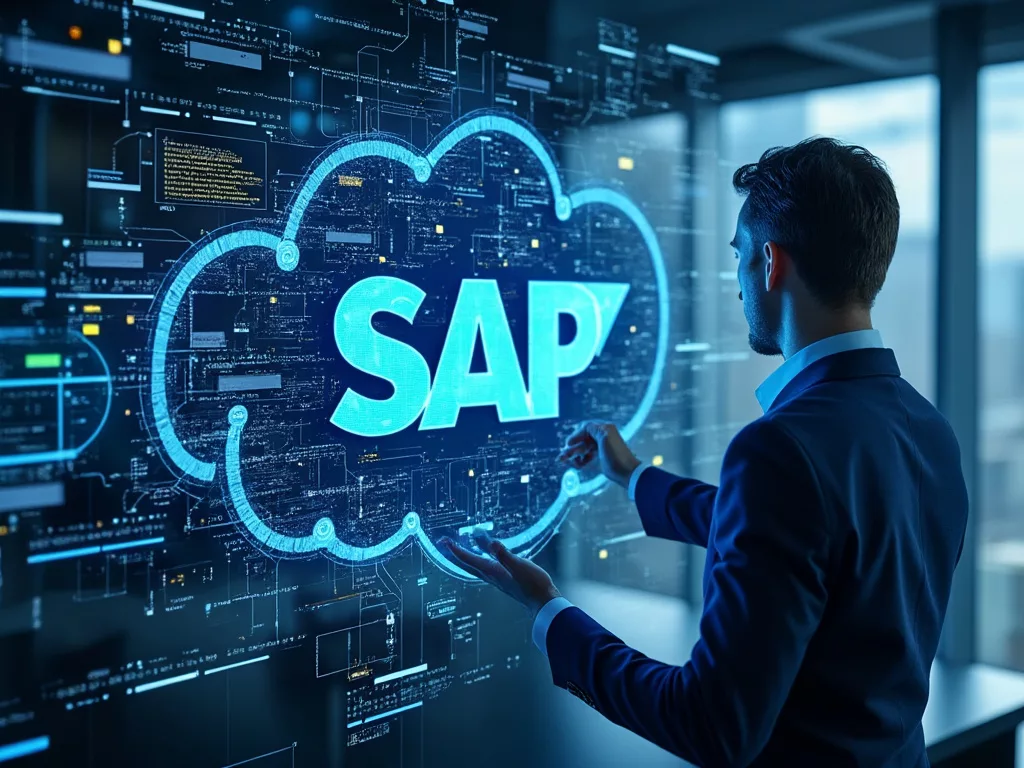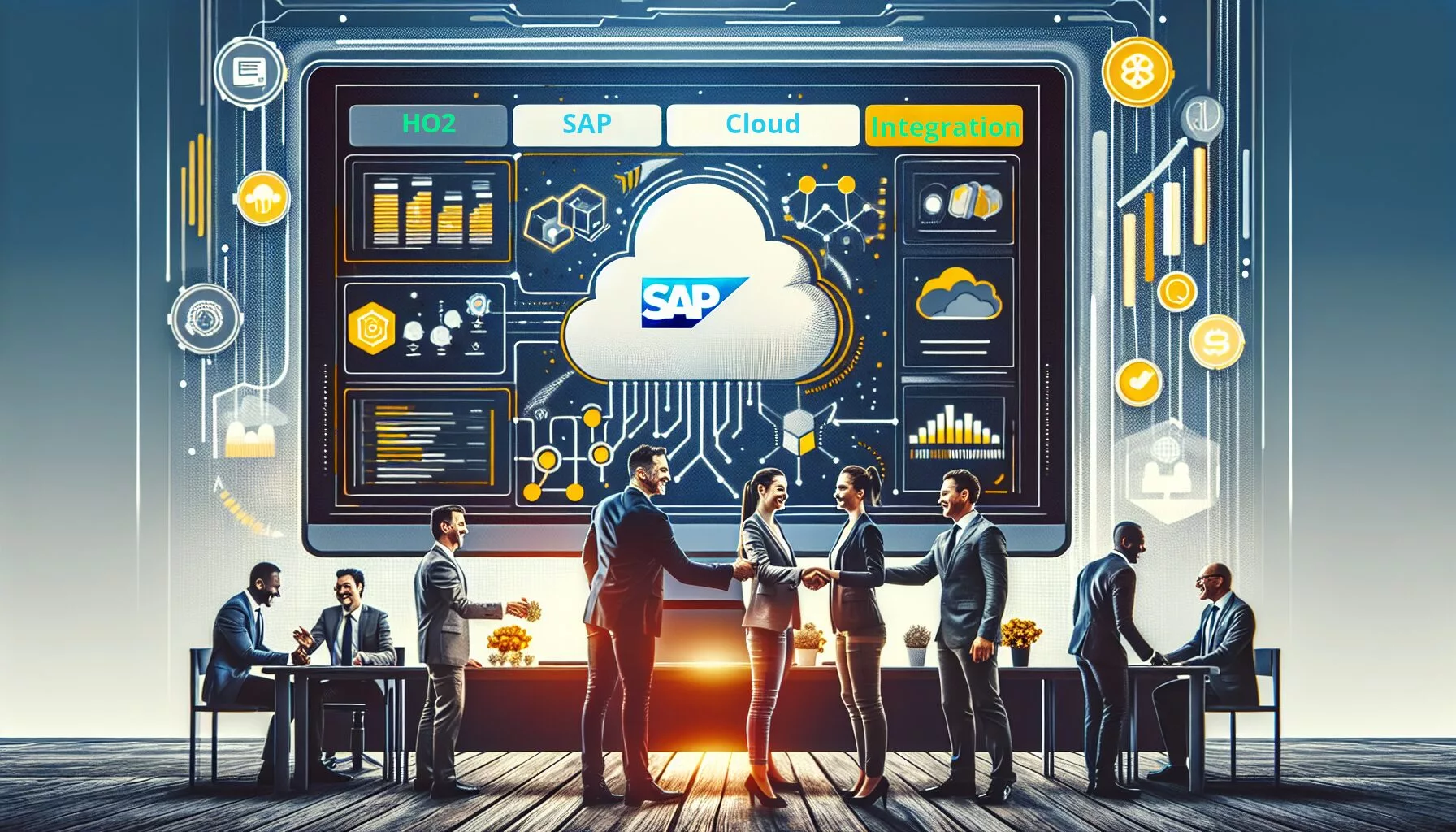The Future of Data Management: Your Journey with SAP Datasphere and HO2
At a time when system landscapes are becoming more and more complex and dealing with data with hybrid but also central solution strategies brings an immense advantage, we will show you an approach in this blog to bring everything together in the best possible way. The answer to this question is provided by SAP’s latest data management product – SAP Datasphere. The advantages it offers and why you should use SAP Datasphere in your enterprise architecture are explained below. Furthermore, we show you how you have a strong partner at your side with us, HO2. We support you with our expertise and competencies in treading a new path. Let’s discover the InnovateSAP initiative together and create significant added value for your company through innovative approaches.
Why SAP Datasphere?
SAP Datasphere replaces the SAP Data Warehouse Cloud and is thus the next generation of data management applications. SAP Datasphere is made up of the following components:
- Data integration: Connects data from various sources, including SAP and non-SAP systems.
- Data Modeling: Enables the creation and management of complex data models.
- Data Management: Provides centralized management of data, including metadata management and data quality.
- Analytics and BI: Integrates analytical and BI tools for real-time analytics and dashboards.
- Cloud and hybrid deployment: Supports cloud-based and hybrid scenarios.
- Security and compliance: Comprehensive security features and compliance management.
- AI and machine learning: Integration of AI and ML models for advanced analytics.
- Collaboration and data sharing: Facilitates collaboration and sharing of data across the organization.
With SAP Datasphere, you use one tool for a variety of use cases, such as data management, data integration and modeling – easily and quickly. It is a low-code/no-code application development and can therefore be fully exploited and used by citizen developers who have little to no experience in IT or computer science.
Gateway Offer
As mentioned at the beginning, SAP Datasphere offers an extensive and fully integrated range of interfaces out-of-the-box.
A wide variety of SAP/non-SAP systems can be easily and quickly connected to your new data management tool. It doesn’t matter whether it’s on-premise or in the cloud. A wizard wizard is included to guide you step-by-step through the integration process.
Gateway Components
With SAP Datasphere, you have access to the so-called Data Market Place. This platform offers a standardized and simplified data exchange and its processes. It allows you to monetize your data assets and become a data provider yourself.
Another component is the catalog. Articles from different disciplines are offered here in the form of data models, data flows, metadata on artifacts. Both components allow for quick and easy integration.
Take advantage of the data and gain an advantage – a new trading venue and an additional data source!
Use Case
We want to bring together and manage real-time data from disparate systems in one central location. The data is to be correlated using the E/R model in order to map all sales orders created by a specific processor with the relevant information.
Procedure
- Connecting systems
- Import data
- Create an E/R model
- Creating a Graphical View
1. Connect systems
When connecting different systems, the SAP Datasphere UI provides two options: local connection and SAP Cloud connector. The prerequisite for using the Cloud Connector is a BTP account.
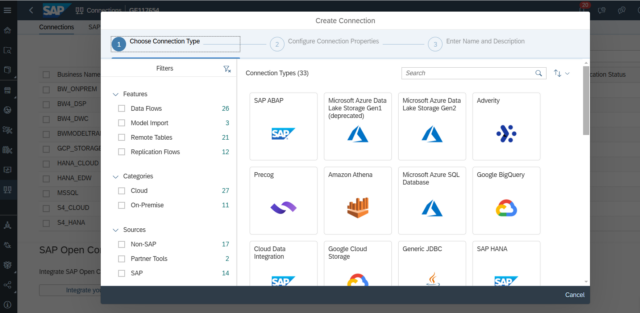 Connections will take you to the Wizard Assistant, which will guide you through the entire process. For this, the necessary credentials of the systems should be known.
Connections will take you to the Wizard Assistant, which will guide you through the entire process. For this, the necessary credentials of the systems should be known.
2. Import data
After the connection to the desired system has been established, the desired data can be imported.
To do this, navigate to the Data Builder and import them via remote tables. These tables are kept up-to-date, if desired, in real time or according to your fixed plan.
3. Create an E/R model
To relate all the data to each other, you create an Entity-Relation Model (E/R Model), which is also done via the Data Builder. The desired data is added via drag-and-drop and can be assigned to each other at will, provided that a common key element can be identified. This is completely automatic without any action on your part.
4. Create a Graphical View
Subsequently, a graphical view will be created based on your E/R model. The purpose now is to shape the data according to the desired target structure. In our case, we want to map all sales orders created by a specific processor with the relevant information. In the Data Builder, select View-Graphical> View and create a new object. Via drag-and-drop, you insert your data step-by-step and use different functions. In our scenario, we only use the join and filter function to merge the data and filter for the processor with the ID parameter “4”.
SAP Datasphere and Artificial Intelligence
In addition to the data layer with the Data Builder tool, SAP Datasphere also offers a business layer with the Business Builder tool. In the business layer, business users can see facts, metrics, and dimensions already modeled in the data layer, and create business models to answer business questions. Here you can prepare your data for sharing with visualization tools like SAP Analytics Cloud. SAP Analytics Cloud (SAC) uses AI as part of augmented analytics and offers your company many advantages:
- Predictive Analytics
- Automated Data Modeling
- Natural Language Processing (NLP)
- Automatic anomaly detection
The HO2 approach
As your partner, we at HO2 bring deep expertise and comprehensive competencies to the project. Our goal is to discover new technologies and optimize existing processes together with you through the InnovateSAP initiative. We believe that through clarity, innovation and strategic planning, the transformation of your data management is possible.
Implementation steps for success
Our experience has shown that a structured approach is crucial. From the exact needs analysis to the implementation of SAP Datasphere, we work closely with you to ensure that all aspects of your business needs are taken into account. We accompany you in every phase of the project – from planning to implementation to success monitoring.
Results that speak for themselves
SAP Datasphere is a platform that provides your company with additional data sources as well as a trading platform for your data. In a time of increasing complexity, this next-generation data management application provides you with a tool to easily manage, centralize data integration and interact with your hybrid system landscape. Based on your data and business models, you harness AI technologies to revolutionize data analytics and open up new opportunities for your business. The new SAP Datasphere Analytic Model solves complex problems in semantic modeling. This offers faster value creation. The reason for this is that semantic definitions and associations from SAP applications are automatically reused. This significantly simplifies the process of preparing important data and making it available to the company.
Ready for change?
Let’s shape the future of your company together with SAP Datasphere. Ready to explore new technologies and revolutionize your data management strategy? Contact us now and find out how we can accompany you on this exciting journey. We look forward to working with you to develop innovative solutions and successfully lead your company into the future. HO2 – Your partner for innovation and success with SAP Datasphere.

